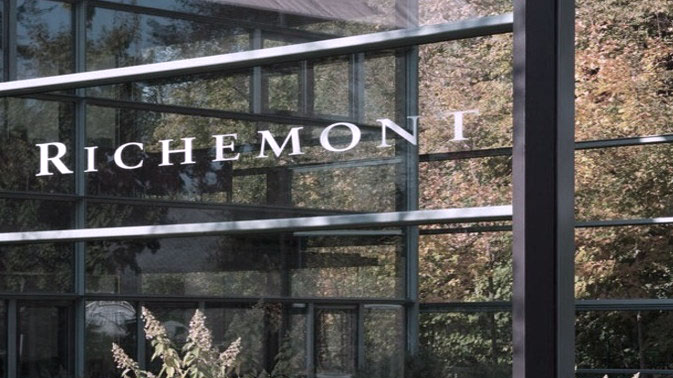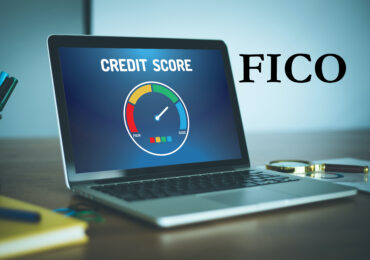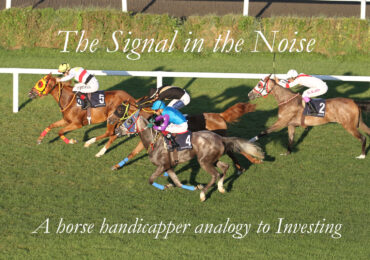The S&P 500 index finished 2015 on a strong note with a 7.04% gain in the fourth quarter.[1] This late surge enabled the index to eke out a positive 1.38% total return for the year, marking the seventh consecutive year of positive returns since the crash of 2008. The year 2016 may put an end to this trend, with the S&P 500 having declined by more than 10% over the first twelve trading days of the year, the second worst start in the history of the index.[2] On the other hand, the market may rebound and end the year in very positive territory, which, incidentally, is what happened in 2009, the only year that experienced an even worse start than 2016. Frankly, we don’t know how 2016 will transpire. Markets are unpredictable in the short run. Over the long term, however, we believe equity ownership should continue to be the best way to grow wealth. Furthermore, we believe owning mostly acyclical, boring, staple-type businesses is a great way to capture this growth while taking less risk than the general market. Finally, if we are appropriately opportunistic, we believe we can enhance our returns even further, and without much incremental long-term risk, by buying into great but cyclical businesses during times of extreme market stress or fear.
During market panics, investors sometimes act in very irrational ways. We’ve seen a number of cases over the years in which people have acknowledged the attractiveness of an investment opportunity over the long term but refrained from buying because of short to medium term concerns. One of the most salient examples is when one of us received a call from a broker during the credit crisis of 2008 and 2009 trying to convince us to short American Express. Though the broker believed that American Express would be a double or triple over the next couple of years, he also believed credit would get worse before it got better, so his recommendation was to short the stock in the near term. In today’s market environment, investor fears are centered on China’s slowdown and whether it will experience a “hard landing.” As with the credit crisis, many stocks are, in our view, deservedly suffering. We would nominate most of the companies in the commodities and energy space as candidates for this category given their leverage combined with our view that the pricing of their products is likely to experience long term deflationary pressure. However, like American Express in the 2008 and 2009 period, we do think some “babies” are getting thrown out with the proverbial bathwater. We believe Compagnie Financiere Richemont (more commonly known as “Richemont”), one of the premier luxury goods companies in the world, is one such example.
Richemont
Richemont is the owner of brands such as Cartier, Van Cleef & Arpels, Vacheron Constantin, and a number of other ultra-high end Swiss watchmakers. Richemont generates about 54% of its revenue from its jewelry maisons, about 30% from its specialist watchmakers, and about 16% from other businesses such as Montblanc and Peter Millar. Roughly 70% of profits come from the jewelry maisons, with the remaining 30% coming almost entirely from the specialist watchmaker business. Geographically, the company is well diversified with 29% of revenue coming from Europe, 8% from the Middle East and Africa, 39% from Asia-Pacific, 15% from the Americas, and 8% from Japan. We believe Richemont is a wonderful business because it 1) operates in a great industry; 2) possesses strongly differentiated brands; and 3) is run by a talented owner-operator.
First, the category of luxury goods is fantastic. As we mentioned in our last letter, innovation is a huge positive that has led to vastly greater wealth and prosperity for the world. Adjusted for inflation, it has driven down the cost of our food, shelter, energy, and all of our other necessities. It’s created entirely new solutions for many of our problems. While these effects are fantastic for the world, these changes can wreak havoc on the pricing of and demand for many companies’ products. Fortunately, there is a certain class of goods that we believe is largely exempt from these forces and that may actually benefit from these trends. This class of goods is the class focused on social status. Unlike necessities, social status is a fundamentally relative good, and so the more time and money each person spends to enhance his or her social status, the more everyone else needs to spend to keep up. In a world of innovation, in which the percentage of disposable income required for necessities is going down, we all will have more and more money available to spend on social status. The main purpose of luxury goods is to enhance social status, so they are one of the purest examples of this favored class of goods. As such, the category of luxury goods should be able to not only keep up with inflation but actually exceed it over time. However, not all luxury goods that confer social status have durable pricing power. Many are subject to the whims of fashion. Jewelry, though, has proven to be a remarkably enduring category. Since the beginning of time, people have valued both its positive impact on their appearance and the social signal it sends about the amount of resources they control.
Second, while jewelry is a great category, unless a company can cut through the noise and differentiate itself, its economics may still be eroded by competition. The main factor that we believe differentiates jewelry brands is their ability to reliably raise social status. Purchasing jewelry reliably raises social status by associating the buyer with high status places and people. In our opinion, Richemont is nearly unparalleled on this dimension. For example, Richemont’s flagship brand, Cartier, was founded almost 170 years ago in Paris, which is perhaps the luxury and fashion capital of the world. Additionally, since Cartier’s founding, many famous people have associated themselves with the brand. By buying a Cartier bracelet, you are buying an affiliation with Paris, past and present, and connecting yourself to kings, queens, and celebrities, past and present, who’ve also worn the jewelry.[3] The affiliations and the advantages that prestigious luxury brands provide are hard to replicate and self-reinforcing. They are hard to replicate because 1) it is impossible to rewrite history and get high status individuals from the past to wear a new brand of jewelry, and 2) it costs a lot of money to get current celebrities, royalty, and other powerful people to advertise a new brand, particularly since even these types of people likely get significant social value from connecting their personal brands to the most prestigious luxury goods brands. They are self-reinforcing because every additional celebrity signed or tony real estate location opened gives the best luxury goods companies even more money and cachet to outcompete their rivals for the next desirable high status individual. This self-reinforcing tendency is especially pronounced in the ultra-luxury jewelry category, where Richemont competes, because of a characteristic of the category that we normally consider a disadvantage: a long repurchase cycle. The problem with a long repurchase cycle is that consumers can more easily defer their purchases during economic downturns, making the cash flows of a long repurchase cycle business more volatile. However, in the case of ultra-luxury jewelry, we think this disadvantage is outweighed by the extra brand loyalty a long repurchase cycle engenders. Given that most customers can only afford to purchase an expensive piece of jewelry on rare occasions, we believe they are much more likely to choose an established brand as opposed to taking a risk on a start-up brand.
Lastly, the key challenge for stewards of luxury brands that have already achieved cultural ascendancy is to balance exclusivity and growth. While a management team can aggressively grow in the short term by continually going down-market and offering products to a wider and wider group of people, this behavior will ultimately undercut the product’s value as a signal of social status. For managements who operate in the public markets, in which analysts and investors demand immediate results and threaten activism if those results don’t appear, the siren song of going just slightly down market to make or beat targets can prove too much to resist. Given the high cost in luxury goods of giving into this temptation, we spent a good deal of time evaluating management’s business strategy and ability to see its strategy through to fruition. Our research instilled in us great confidence in both of these aspects. We believe the Chairman of Richemont, Johann Rupert, has no interest in sacrificing exclusivity for growth. In an interview, he told one story of Cartier’s design team pitching him on a mobile phone, and he immediately rejected the idea, telling the team that people should never throw away one of Cartier’s products. Rather, Richemont should position its jewelry and watches as timeless heirlooms to pass down from generation to generation. On the other hand, he strongly believes that 25% of the products should be new every year, but that the new 25% should be consistent with the core brand image. [4] We believe this philosophy is a wise balance between newness and timelessness and growth versus exclusivity. Additionally, he has long invested in building out developing markets, and this long-term orientation has paid off handsomely, as 40% of all sales now come from the Asia-Pacific region. Finally, because he realizes the cyclical nature of luxury goods, he manages the balance sheet very conservatively and currently has net cash equal to roughly 15% of Richemont’s market capitalization. Taken together, these data points give us great confidence in management’s strategy. Fortunately, Rupert also has both the incentives and control to execute his long-term strategy since, through his family’s limited partnership, he owns 9.1 percent of Richemont’s equity and 50 percent of its voting rights.[5]
In summary, we believe Richemont owns highly differentiated brands in a very advantaged category, which we believe should allow the company to grow its “same store”[6] revenue and profits at or better than inflation over time. When we also consider the huge opportunity to add new stores in underpenetrated markets such as China, India, and Africa, we believe revenue and profits should be able to grow even faster.
If the business is so attractive, why is the stock price under pressure? The main problem for Richemont over the near to medium term is China. Luxury goods are economically sensitive, and, with 40% of the company’s business coming from the Asia-Pacific region, Richemont will clearly be impacted by a more severe than expected recession in China. To make matters worse, given China’s size, a recession there could spread to the rest of the world, impacting demand everywhere. Even if the recession isn’t worse than expected, Richemont could still disappoint over the near term as a result of an ongoing anti-corruption crackdown that began three years ago with the appointment of China’s new prime minister. While much of the damage to Richemont’s sales from this issue has probably already occurred, it’s hard to assess what future political moves China’s prime minister is likely to make. Fortunately, this China problem that Richemont is suffering from over the short term is one of the main opportunities for the business over the long term. China is a huge market that clearly already loves the brand. In addition, China’s demographic situation is incredibly favorable for a prestigious jewelry purveyor. As a result of its one child policy, China has 33 million more men than women.[7] The economics of this “mating market” should drive much more peacocking and gift-giving than in Richemont’s other geographic areas of operation. Thus, while we admit that Asian luxury demand could be weaker than anticipated in the short to medium term, we believe it’s equally likely to end up being stronger than expected. Given these odds, we believe our best course of action is to buy when the price becomes attractive and to buy more if it gets even more attractive. At a 4.6% shareholder yield with 15% of its market capitalization in net cash and huge long term growth opportunities, we believe Richemont is quite attractive and will generate sizeable risk-adjusted returns over time.
Concluding Remarks
While the market gyrations of late can certainly feel uncomfortable, rest assured that we are prepared for them. We have a sensible investment philosophy focused on owning a portfolio of solid, market-leading, conservatively leveraged businesses, the vast majority of which produce large amounts of cash flow in both good times and bad. This strong foundation gives us the ability to search for the wonderful but more cyclical businesses that sometimes get cheap during market downturns. In the case of Richemont, we believe we’ve found one that meets our high standards. We hope to find more.
We thank you for your trust and loyalty. Please don’t hesitate to call us if you have any questions or concerns. We appreciate the opportunity to serve you in any way we can.
Sincerely,
The YCG Team
Disclaimer: The specific securities identified and discussed should not be considered a recommendation to purchase or sell any particular security. Rather, this commentary is presented solely for the purpose of illustrating YCG’s investment approach. These commentaries contain our views and opinions at the time such commentaries were written and are subject to change thereafter. The securities discussed do not represent an account’s entire portfolio and in the aggregate may represent only a small percentage of an account’s portfolio holdings. These commentaries may include “forward looking statements” which may or may not be accurate in the long-term. It should not be assumed that any of the securities transactions or holdings discussed were or will prove to be profitable. Past performance is no guarantee of future results.
[1] For information on the performance of our separate account composite strategies, please visit www.ycginvestments.com/performance. For information about your specific account performance, please contact us at (512) 505-2347 or email [email protected].
[2] See http://qz.com/598758/it-really-is-the-stock-markets-worst-year-ever/.
[3] Cartier has a long history of sales to royalty and celebrities. King Edward VII of England referred to Cartier as “the jeweller of kings and the king of jewellers.” For his coronation in 1902, Edward VII ordered 27 tiaras and issued a royal warrant to Cartier in 1904. Similar warrants soon followed from the courts of Spain, Portugal, Russia, Siam, Greece, Serbia, Belgium, Romania, Egypt, Albania, Monaco, and the House of Orleans. See https://en.wikipedia.org/wiki/Cartier_(jeweler).
[4] See https://www.youtube.com/watch?v=-MvyTHPueKI.
[5] https://www.richemont.com/about-richemont/corporate-governance/group-structure.html
[6] We define “same store” revenue and profits as the amounts that come from already existing retail stores and wholesale channels.
[7] See http://www.rfa.org/english/news/china/gender-01222015125826.html.




